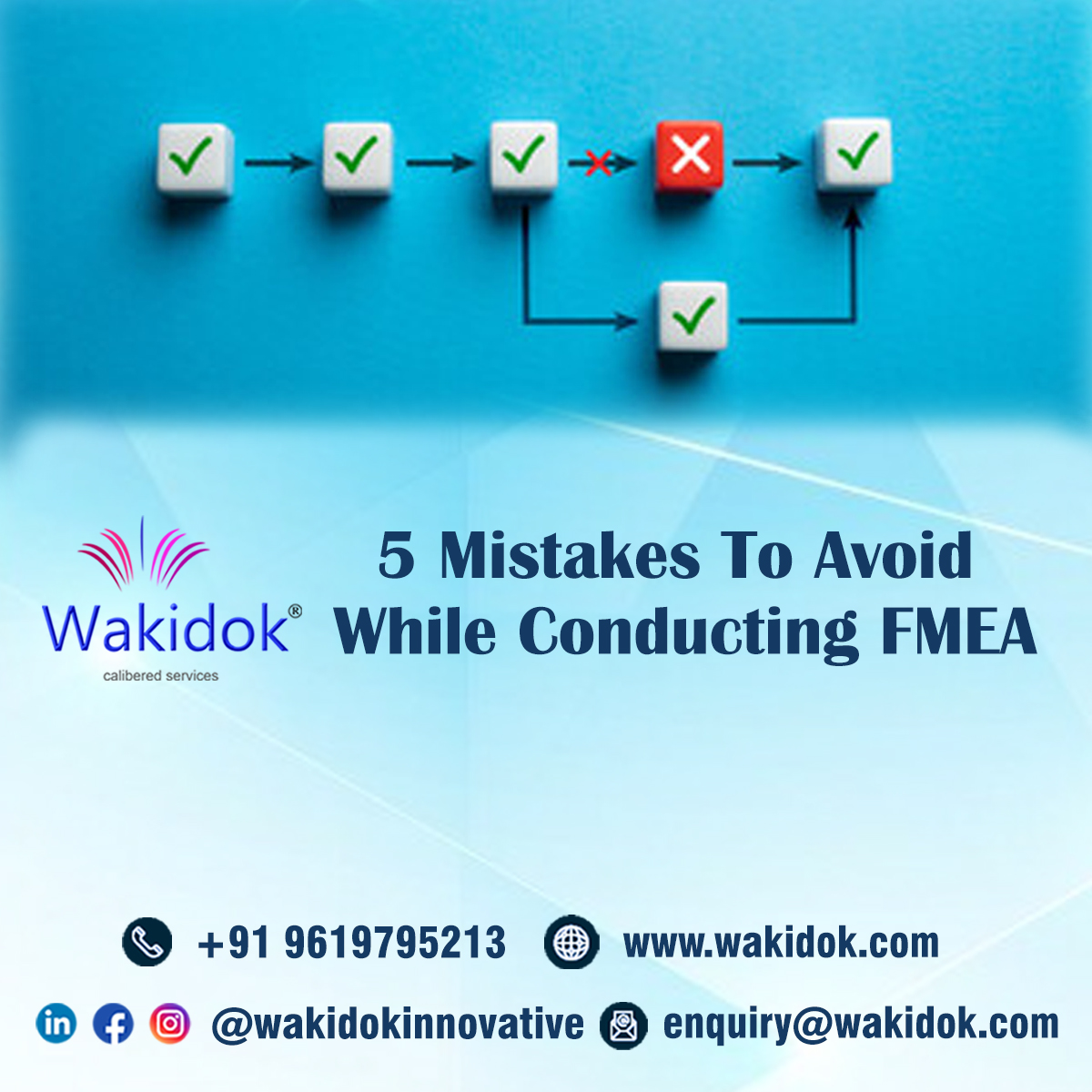5 Mistakes to avoid while conducting FMEA
Failure Modes and Effects Analysis (FMEA) is a powerful tool widely used in various industries to identify and mitigate potential risks in products, processes, products, and systems. When conducted effectively, FMEA can lead to improved quality, enhanced safety, and increased customer satisfaction. However, like any methodology, FMEA is not without its pitfalls.
In this comprehensive blog post, we will delve into five common mistakes one should avoid and provide detailed guidance on how to avoid them. By steering clear of these errors, you can ensure that your FMEA efforts yield meaningful results and contribute to the overall success of your projects.
Mistake #1: Neglecting Team Collaboration
Why Collaboration Matters?
One of the most significant FMEA mistakes is neglecting to involve a cross-functional team. FMEA requires diverse perspectives and expertise to identify potential failure modes comprehensively. When team members from various departments or disciplines relevant to the process or product under analysis come together, they bring unique insights to the table. Engineers, operators, quality experts, and designers all offer valuable viewpoints that contribute to a more holistic evaluation of risks.
How to Avoid it
To avoid this common mistake, it’s crucial to assemble a team with representatives from relevant areas of your organization. Create an environment that fosters collaboration and effective communication among team members. Encourage open discussions and the sharing of insights and concerns. By harnessing the collective knowledge and experience of your team, you can uncover potential failure modes that might have been overlooked otherwise.
Mistake #2: Inadequate Risk Assessment
Importance of Accurate Risk Assessment
Sometimes, FMEA teams fail to assess the severity, occurrence, and detection ratings accurately. This can lead to an inaccurate representation of the risk posed by a particular failure mode. Accurate risk assessment is at the core of effective FMEA because it guides decision-making on which issues require immediate attention and resources.
How to Avoid it
To ensure accurate risk assessment, it’s essential to invest time and effort in training team members on how to assess severity, occurrence, and detection ratings consistently. Use clear rating scales and provide practical examples to ensure everyone understands the criteria. Encourage open discussions within the team to reach a consensus on ratings. Additionally, consider involving subject matter experts who can provide insights into specific risks and their potential consequences.
Mistake #3: Overlooking Historical Data
Value of historical data
FMEA teams may neglect to consider historical data or past incidents related to the process or product. This oversight can result in missing critical failure modes. Historical data can provide valuable insights into recurring issues or failure modes, helping teams focus their efforts on areas that require attention.
How to Avoid it
To avoid this mistake, gather and analyze historical data related to the process, product, or system under examination. Review past incidents, near misses, or quality concerns. Look for patterns and trends that may reveal recurring failure modes. By combining historical data with FMEA, you can enhance the accuracy of your risk assessment and ensure that all relevant factors are considered.
Mistake #4: Lack of Follow up
Importance of Follow up
Creating an FMEA document without a plan for follow-up actions is a common error. Without proper follow-up, identified risks may remain unaddressed, rendering the FMEA ineffective. Effective follow-up is critical to ensuring that the actions needed to mitigate risks are carried out successfully.
How to Avoid it
To avoid this pitfall, develop a structured process for follow-up actions as an integral part of your FMEA process. Assign responsibilities for implementing risk mitigation strategies and set clear deadlines for these actions. Regularly review the progress of these actions to ensure they are on track. Establish mechanisms for reporting and escalating issues when necessary. By making follow-up an essential component of your FMEA process, you ensure that identified risks are actively managed and mitigated. Using FMEA in isolation
Mistake #5: Not Integrating FMEA into Broader Quality Management
FMEA is a valuable tool, but it should not be used in isolation. Some organizations make the mistake of relying solely on FMEA without integrating it into their broader quality management and continuous improvement initiatives. To maximize the impact of FMEA, it should be part of a comprehensive quality management system.
How to Avoid it
To avoid this common mistake, integrate FMEA into your organization’s quality management system. Connect FMEA findings to other critical processes such as corrective and preventive actions (CAPA) or Six Sigma projects. This ensures that FMEA becomes an integral part of your overall improvement efforts. By aligning FMEA with your broader quality management initiatives, you can leverage its insights to drive continuous improvement and enhance overall operational excellence.
Conclusion
In conclusion, mastering FMEA requires vigilance in avoiding common mistakes that can undermine its effectiveness. By fostering collaboration among cross-functional teams, accurately assessing risk, leveraging historical data, implementing effective follow-up actions, and integrating FMEA into your organization’s broader quality management system, you can harness the full potential of FMEA to enhance quality, safety, and customer satisfaction.
FMEA is a valuable tool, but its effectiveness depends on how it’s used. When conducted with care and diligence, FMEA can be a cornerstone of your organization’s continuous improvement efforts, helping you proactively address potential issues and drive excellence in your processes, products, or systems. Avoiding these common pitfalls ensures that your FMEA efforts are successful and impactful, contributing to the overall success of your projects and your organization as a whole.
What Next?
Now that you have understood mistakes to avoid, you must learn FMEA from experts to differentiate yourself in the job market.
Wakidok Innovative Solutions has been conducting a Competency Development Program on Failure Mode Effects and Analysis (FMEA) as per AIAG and VDA Handbook. The training program has been curated to impart knowledge about methodology and best practices of FMEA.
Not only that, it covers both – DFMEA and PFMEA approaches to make you all round professional. If you want to master FMEA Methodologies, you can register for the program below.


